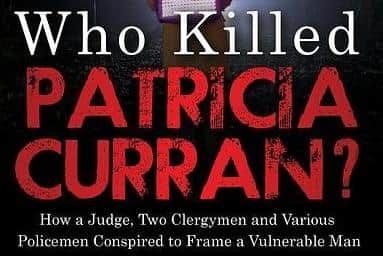New book reexamines historic Newtownabbey murder
and live on Freeview channel 276
Mr Fagan (77), who currently works as a ghost writer, having spent 30 years working as a journalist in Dublin, firstly and lastly for the Irish Times and in between for the Irish Independent and Sunday Tribune, recently published the true crime book ‘Who killed Patricia Curran?’
The book, available on Amazon, charts the story of Patricia Curran, a nineteen-year-old student at Queen’s University in Belfast, who was murdered in November 1952.
Advertisement
Hide AdAdvertisement
Hide AdPatricia was found dead in the grounds of her family home, Glen House in Whiteabbey.


Her father Lance Curran was a high court judge at the time Patricia was murdered and had previously served as attorney general.
Detailing what inspired him to write the book, Mr Fagan said: “I was home from school in Dublin, age eight, recovering from measles, bored to tears, reading everything I could get my hands on. When I discovered the extensive court reports of the trial of Iain Hay Gordon in my father’s Irish Press I was hooked. Immediately.
“It appeared that Patricia had been stabbed 37 times before she got home, but the RUC detective in charge, Albert Kennedy, was not convinced. Kennedy reported to the RUC inspector general (chief constable) that Patricia Curran’s father’s account of events the night his daughter was murdered didn’t ring true.
Advertisement
Hide AdAdvertisement
Hide Ad“As Lance Curran was a high court judge and a prominent member of the ruling Unionist Party, this case was going to be a very hot potato. So the RUC boss Sir Richard Pim sent for Scotland Yard, side-lining his own senior investigator.
“Two ‘heavies’ duly arrived in Belfast and before long identified a vulnerable young RAF clerk Iain Hay Gordon as the murderer. After three days of intensive interrogation, Gordon confessed and was subsequently found guilty, but insane. He afterward said he would have admitted to anything to stop the detectives shouting at him.
“Two problems then arose. It became clear during the trial that Gordon, whose catastrophic incompetence made him the laughingstock of RAF Edenmore could not have murdered anyone. Attorney General Edmund Warnock, another leading Unionist, noted this on the prosecution copy of the trial transcript. And the other question was – if Gordon didn’t murder Patricia who did?
The Gordon problem was solved incrementally. Firstly the guilty but insane verdict removed the immediate problem of hanging an innocent man.
Advertisement
Hide AdAdvertisement
Hide Ad“Instead, he was sent to Holywell, where an enlightened medical director Dr Gilbert Smith treated him humanely. Dorothy Turtle who taught at the Quaker school in Lisburn co-ordinated a release campaign which resulted in Gordon being sent home to Scotland after seven years, provided he changed his name and spoke to no one about the case. His conviction was eventually set aside in 2000, too late as his life was already blighted.”
To assist his research for the book, Mr Fagan was able to get speaking to some people who knew Patricia.
He explained: “From speaking to some of her friends, I got a sense of what the family was like, of the individuals concerned and what an awful tragedy it was for them to lose an only daughter in that way.
“I also got a better picture of Patricia, she was a modern young woman, friendly to the village children. Patricia was a practical person, she drove a van as a holiday job for builder’s suppliers and she was good at sport. If she were around today, my guess is she’d be studying engineering in Queen’s or Ulster University.”
Advertisement
Hide AdAdvertisement
Hide AdSince launching the book this month, Mr Fagan has received positive feedback.
He added: “Firstly, I wrote this book to get at the facts. I hope people will find the nitty gritty of what was happening at the trial of Gordon interesting. I did. My book, which marks the 70th anniversary of her death in November, shows that even at Gordon’s trial, prosecution lawyers had doubts about his guilt.
“Halfway through the trial the lawyers, prosecution and defence, knew the wrong person was in the dock, but he had been intimidated into confessing. Fifty years would pass before that legal circle was squared. Secondly, I was impressed by those who tried to help Gordon, whose whole life was blighted, particularly those in Holywell. I was also impressed by the courage of politicians like Walter Topping and Brian Faulkner, both unionists, who accepted that Gordon should be released, despite having been convicted of murder.
“There were other good people who eventually succeeded in righting an injustice, but it took too long. And lastly, for myself I’m glad to have got this done, even if also I took far too long.”
‘Who killed Patricia Curran?’ is available on Amazon for £12 or £4 for Kindle.